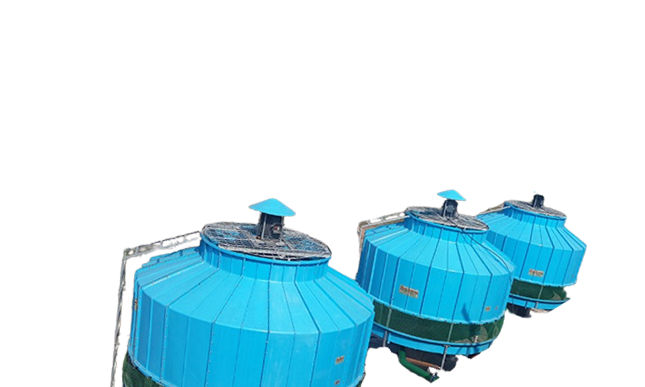Material Selection and Corrosion Control in Round Towers
Material selection and corrosion control are critical aspects of round cooling tower plan to ensure life span, proficiency, and security. Let’s explore the considerations and Material Selection and Corrosion Control in Round Towers:
Material Selection:
Structural Components:
- Shell and Frame: Common materials for the shell and frame of round cooling towers incorporate fiberglass reinforced plastic (FRP), galvanized steel, stainless steel, and concrete. FRP is frequently preferred for its corrosion resistance, lightweight properties, and ease of support.
- Support Structure: Steel or concrete back structures give soundness and structural integrity to the cooling tower. Galvanized steel or stainless steel are commonly utilized for steel components to prevent corrosion.
Heat Exchange Surfaces:
- Tubes: The tubes in round cooling towers are ordinarily made of materials such as copper, stainless steel, or carbon steel. The choice depends on components like liquid properties, temperature, and corrosion resistance prerequisites.
- Fill Media: Fill media can be built from different materials, counting PVC, polypropylene, or fiberglass. These materials offer resistance to corrosion, scaling, and natural development whereas encouraging efficient heat transfer.
Corrosion Control:
Protective Coatings:
- Applying protective coatings to metal components, such as the shell, outline, and support structure, can give an extra layer of corrosion resistance. Epoxy, polyurethane, or specialized corrosion-resistant coatings are commonly used for this purpose.
Water Treatment:
- Proper water treatment is basic to anticipate corrosion inside the cooling tower. Chemical added substances, such as corrosion inhibitors, pH adjusters, and biocides, help maintain water quality and repress the arrangement of corrosive specialists, scale, and microbial development.
- pH levels should be carefully checked and maintained inside recommended ranges to prevent acidic or alkaline conditions that can accelerate corrosion.
Cathodic Protection:
- Cathodic protection systems, such as sacrificial anodes or impressed current systems, can be introduced to protect metal components from corrosion. These systems work by presenting a sacrificial metal or electrical current to neutralize the corrosive processes.
Regular Inspection and Maintenance:
- Regular inspection of all components, including metal surfaces, fill media, and water distribution systems, is significant to recognize signs of corrosion or deterioration early. Prompt repairs or substitutions can prevent assist damage and expand the lifespan of the cooling tower.
- Cleaning and descaling of heat exchange surfaces and water distribution systems should be performed routinely to remove stores and avoid corrosion.
By carefully selecting appropriate materials and executing effective corrosion control measures, round cooling towers can withstand harsh operating conditions, minimize support requirements, and guarantee dependable execution over their operational lifespan. Collaboration between engineers, materials specialists, and support staff is basic to create and actualize a comprehensive corrosion administration strategy tailored to the particular necessities of each cooling tower establishment.


